
The Life Science Museum of Zunyi Medical University was established for the preservation and utilization of valuable biological specimen resources and research achievements. With an exhibition area of 2,200 square meters, it serves as a museum-like exhibition hall. Its main functions include education, teaching, scientific research, and public outreach in the field of life sciences.

The theme of the museum is life, humanity, and nature, aiming to inspire visitors to contemplate the relationships among these three aspects.
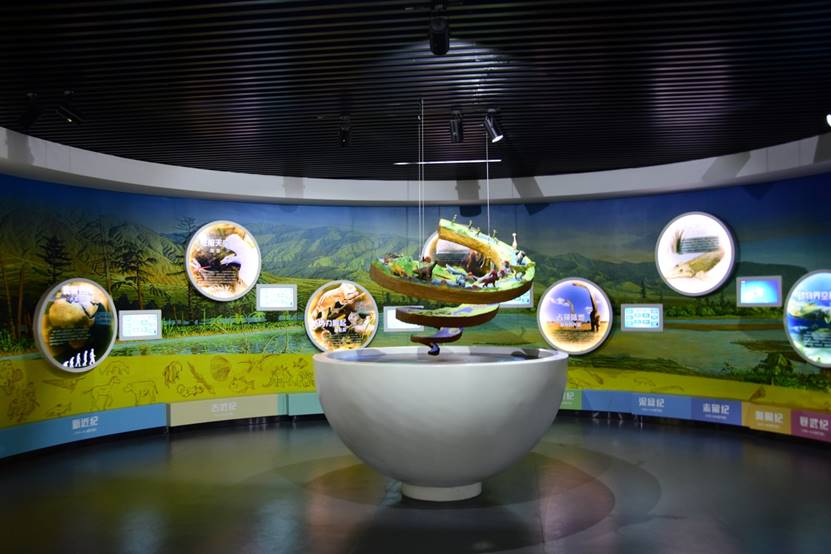
The Life Evolution Exhibition Area shows the mysteries of life evolution, starting from the lower organisms and progressing towards higher ones. Through the three-dimensional spiral model of evolution, illuminated panels on the walls, and interactive display screens, we collectively showcase the 4.5-billion-year evolutionary process of life, starting from inorganic to organic, from single-celled to multicellular, and from aquatic to terrestrial life forms. The evolution of life can be described as follows: the emergence of life in Earth's hot springs, the divergence of animal and plant kingdoms, the gradual evolution from single-celled to multi-cellular organisms, the unprecedented proliferation of life during the Cambrian explosion, the conquest of land by amphibians, the rise and extinction of dinosaurs, and the emergence of mammals leading to the arrival of humans. As we observe the 4.5-billion-year history of life's evolution, the human evolution in 4 million years is but a fleeting moment. Our individual lives, too, are transient like the blooming of a flower.
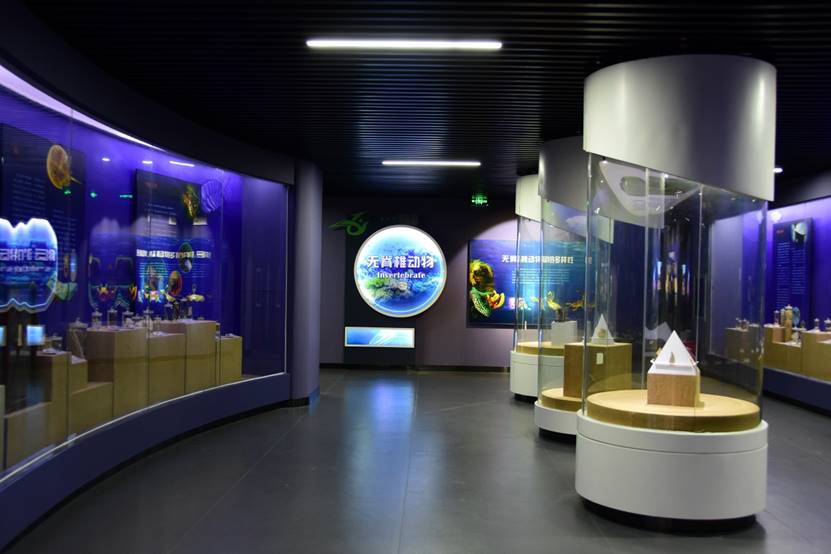
The Invertebrate Exhibition Area showcases the relationship between invertebrates and humans, highlighting both their beneficial and harmful aspects. On the beneficial side, invertebrates play significant roles in areas such as food production, healthcare, wellness, and industry. On the other hand, their harmful aspects manifest in agricultural pests, disease transmission, and causing illnesses. Invertebrates represent the lowest-level animal group, accounting for 95% of all animal species. The central display features fossilized examples of typical invertebrates, namely, the Nautilus, Jellyfish, and Graptolite. We have 71 preserved invertebrate specimens from our collection.
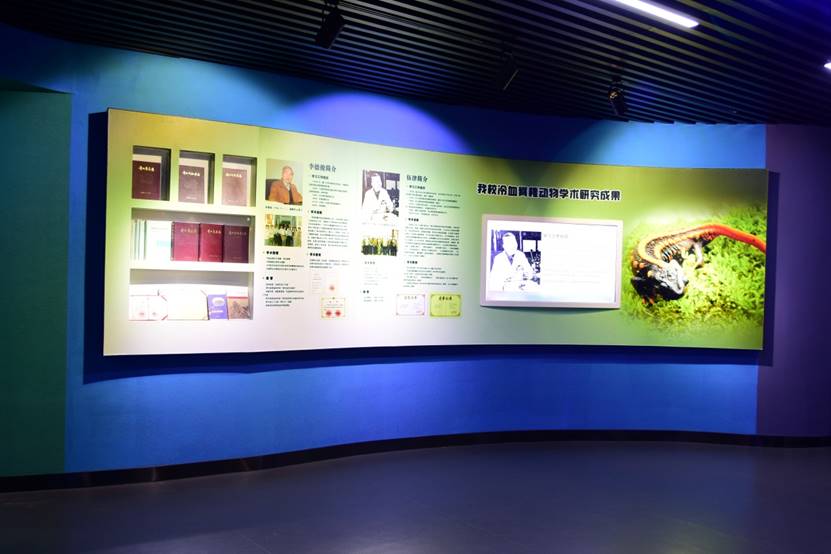
This is the Scholars' Wall. The collection of over 10,000 precious specimens in our museum has been accumulated and passed down by three generations of biologists from our university over half a century. Thanks to the attention and support from our Party Committee, the establishment of the museum has made it possible to showcase various biological specimens and research achievements. First and foremost, we have Professor Wu Lv, who is renowned for his well-known science book for kids, "The Secret of Snake Island.” Professor Wu Lv and his team have made groundbreaking research achievements over the past 20 years, with a focus on Guizhou and coverage across the Southwest region and even the entire country. He has supervised the compilation of 14 volumes of theGuizhou Fauna, each serving as a strong support for theChinese Fauna. Each volume has been awarded the second prize for scientific and technological progress in Guizhou Province. Professor Wu Lyu passed away at the age of 69 due to illness. In his will, he donated his body to our affiliated hospital for scientific research. Professor Li Dejun, the second-generation biologist, has carried on Professor Wu Lv's research with great success and has been honored with a special allowance from the State Council. He has established the largest herpetology specimen room in Guizhou Province. In the 1990s, the Chinese Society of Herpetology was based in the Department of Biology of ZMU.

The Fish Exhibition Area showcases over 220 species of fish, representing a quarter of the freshwater fish in China, including the Chinese sturgeon, Mandarin fish, Amur sturgeon, and Chinese paddlefish, depicted through oil painting scenes. The model specimens exhibited here are the 11 species of Golden-line barbel fish discovered and named by Professor Wang Dazhong, a third-generation biologist of ZMU. The Golden-line barbel fish primarily inhabit caves and have undergone eye degeneration, earning them the name "blind fish.” Professor Wang Dazhong has made significant contributions to the classification research of the Golden-line barbel genus.
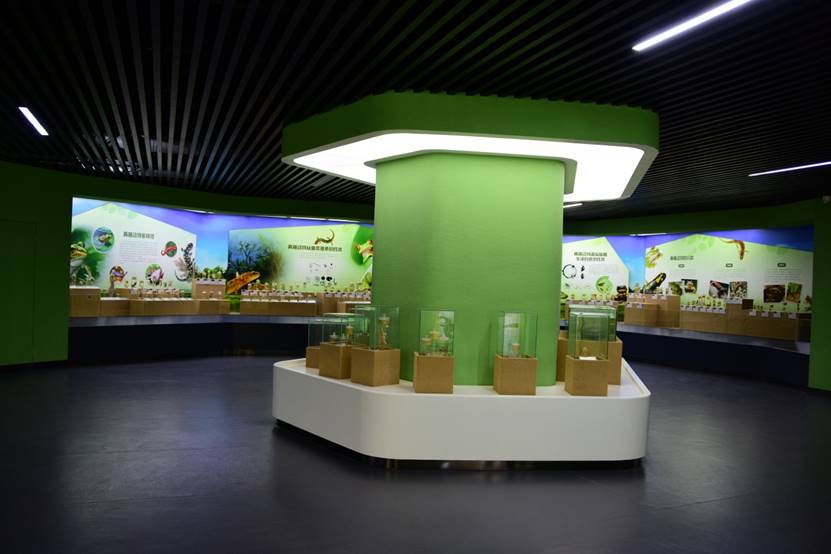
Amphibians represent a transitional type in the evolutionary history of animals, transitioning from aquatic to terrestrial habitats. They serve as natural indicators of the Earth's ecological health. Here, we showcase over 100 species of amphibian specimens from our collection, accounting for one-third of the amphibian diversity in China. The Wuchuan odor frog displayed here was discovered by ZMU in 1978 and officially named in 1983. Due to its narrow habitat range, it was classified as a critically endangered species in 2001. Thanks to the research and conservation efforts of our scholars in recent years, it has regained vitality. This is a typical story of research contributing to conservation.
For the Reptile, we display over 210 species of reptile specimens, accounting for two-thirds of the reptile diversity in the country. Reptiles represent a group of animals that have completely transitioned from water to land in their evolutionary history. The exhibition showcases turtles, tortoises, and lizards in sequence. The central display features specimens of nationally rare snake species, including the python, which is classified as a second-level protected animal and represents one of the most primitive types of reptiles.

The entire exhibition in this area features snakes. Thanks to the leadership of Professor Wu Lyu from our university, who led the team to explore Snake Island, our collection of snake specimens is particularly abundant. The central display showcases endangered or critically endangered snake species and their eggs, which hold significant medicinal value.
The first floor, centered around the theme of life evolution, primarily showcases the academic achievements of our university's biology research. It is the largest exhibition of its kind in Guizhou Province and ranks among the top in terms of animal diversity among similar domestic and international venues. It holds a unique and irreplaceable position. This space serves as a platform for scientific research and academic exchanges in the field of cold-blooded vertebrates. It also serves as a platform for our university students to understand the relationship between humans and nature and as a science popularization platform for primary and secondary school students and the general public.
Along the corridor, you will find the Tree of Life, which can help you review the evolutionary relationships between species throughout the process of life evolution. As we progress through the evolutionary tree, we reach the category of mammals, including ancient apes, which have undergone a 4-million-year journey of evolution leading to the emergence of modern humans.
The entire second floor focuses on analyzing the mysteries of the human body and the relationship between humans and nature, from a microscopic to a macroscopic perspective. It serves as a dynamic platform for students’ entrance education and the teaching of basic medicine at our university.
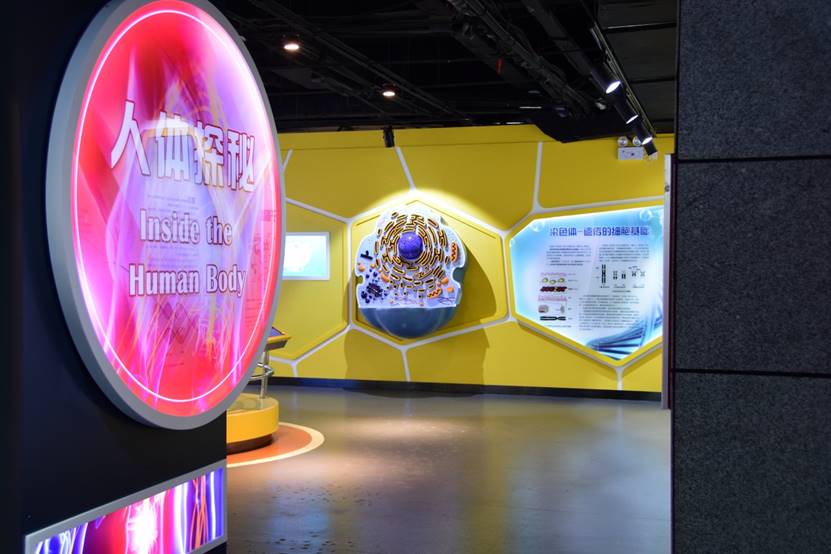
The Human Body Exhibition Area is designed to resemble individual cellular units, and the display walls provide information on the molecular basis of genetics. In the center, there is a model representing the double helix structure of DNA during replication. Through this model and accompanying videos, you can learn how human genes regulate biological processes. One interactive exhibit is the Cell Division demonstration, where you can observe the dynamic process of cell division by rotating the cylinder. This showcases the latest achievements in medical genetics research, demonstrating the "genetic mapping of disease-causing genes on chromosomes" in humans. For example, the disease-causing gene for type A thalassemia, which is highly prevalent in Guizhou region, is located on chromosome 16. Here we have a three-dimensional model of a cell, where you can assemble the components of the cell to trigger multimedia videos that provide insights into the structure and functioning of cell organelles.
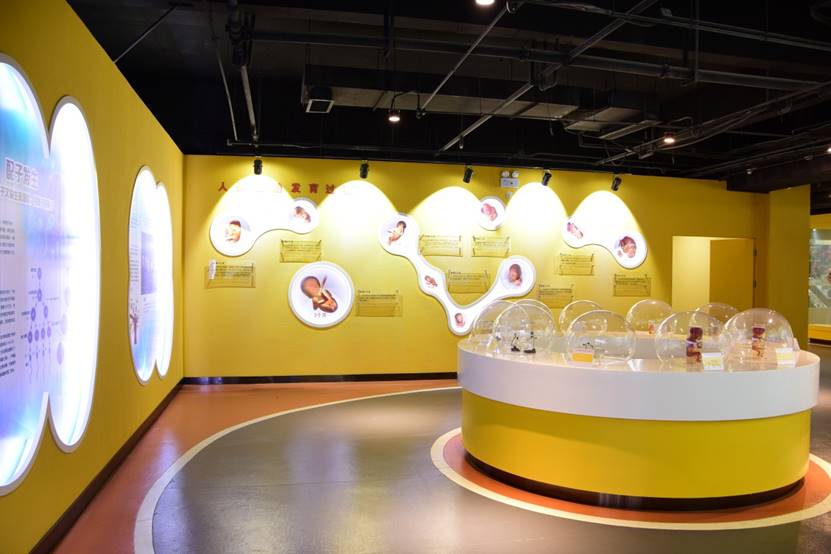
This is the Human Embryo Development Exhibition Area. Every individual develops from the fusion of sperm and egg to form a fertilized egg. The illuminated panels on the wall showcase key stages of embryonic development. The birth of life is a complex and challenging process. By exploring the process of reproduction here, we can appreciate the difficulties of being a mother and develop a deeper sense of gratitude for our own lives. The central display features 10 embryo specimens, allowing us to visually witness the transformation of the fetus from small to large and marvel at the incredible power of life.
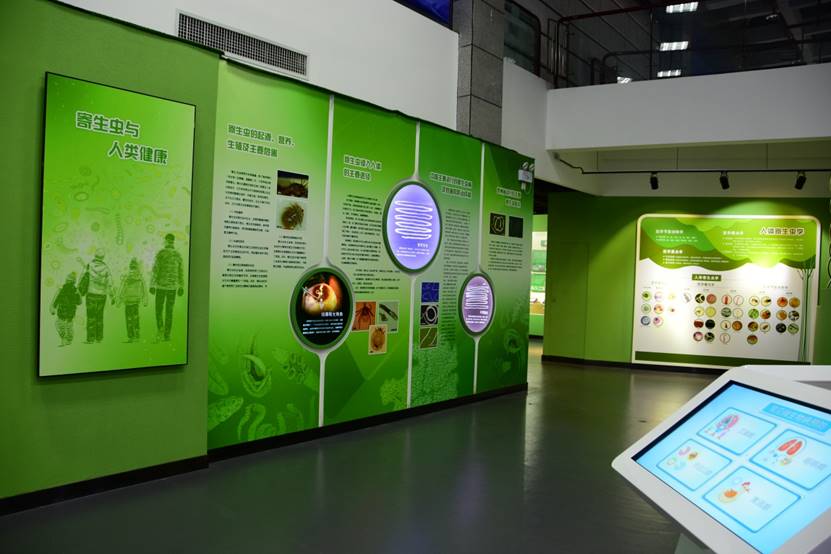
This is the Parasites Exhibition Area. Parasites are mostly invertebrates. Here, we showcase four educational topics: "Diseases from Food Contamination”, "Pet-Related Diseases”, "Hidden Dangers in the Environment”, and "The Great Harm of Tiny Insects”. These topics aim to educate visitors on how to prevent parasitic diseases.
